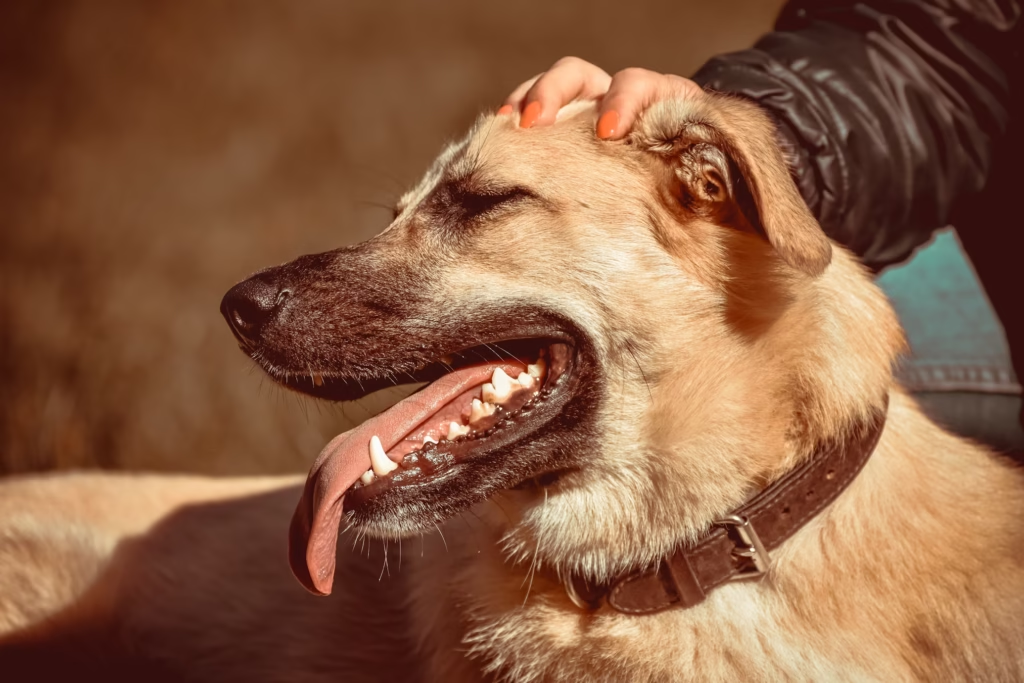How to Stop a Dog from Whining: 7 Vet-Approved Fast & Easy Solutions 🐶✨

If you’ve ever found yourself wide awake at 3 a.m. because of a whining dog—or had to pause a Zoom call because your pup decided to launch into a heartfelt solo—you’re definitely not alone. Whining is one of the most common ways dogs communicate, but it’s also one of the most frustrating behaviors for pet parents to deal with. 😩
Whether it’s a new puppy adjusting to their crate or an older dog begging for attention, knowing how to stop a dog from whining takes more than guesswork. The good news? There are effective, compassionate, and science-backed methods you can use to help your dog feel more secure—and help you reclaim your sanity. 🧠💗
In this in-depth guide, we’ll explore:
- Why dogs whine in the first place 🧐
- How to tell the difference between emotional and physical whining 🩺
- 7 proven, vet-recommended strategies for how to get a dog to stop whining
- Mistakes to avoid if you want long-term results ❌
- Special tips just for puppies 🍼
- FAQs you’ve probably Googled at 2 a.m. 📱
Let’s get started—and get that whining under control for good. 🐾
Table of Contents
Why Is My Puppy Whining? Or Why Is My Dog Whining in General?

Dogs don’t have the luxury of words like we do, so they use body language, barking, and yes—whining—to express themselves. While it may sound annoying to us, whining is your dog’s way of saying, “Hey! Something’s up!”
Here are the most common reasons behind your dog’s vocal outbursts:
1. Physical Needs
Just like a baby crying for a bottle, dogs whine when they’re hungry, thirsty, or need to go outside. Puppies in particular will whine when they need a potty break—because their little bladders just can’t hold it for long. 🍼
2. Discomfort or Pain
Sometimes, whining is your dog’s way of saying, “Ouch.” This could be from dental issues, arthritis, digestive problems, injuries, or even just sore muscles after a long walk.
🩺 Vet Insight: “Whining that comes on suddenly or is paired with other symptoms like limping or loss of appetite should always prompt a vet visit,” says Dr. Laura Bennett, DVM, a veterinarian with over a decade of experience in canine behavior.
3. Anxiety or Stress
Separation anxiety, changes in environment, new family members, loud noises—these can all cause your dog to become anxious and vocal.
4. Boredom
Dogs are intelligent, social animals. If they’re not getting enough stimulation, whining is often how they express their frustration.
5. Excitement
Some dogs are just overly enthusiastic! Whining during playtime, when you grab the leash, or right before mealtime can be a sign of pent-up excitement.
6. Seeking Attention
If your dog has learned that whining gets a reaction—positive or negative—they’ll keep doing it. Even scolding can feel like a reward if it gets your focus.
By asking “why is my puppy whining?” or “why is my dog whining at night or when I leave?”, you’re taking the right first step: understanding the root cause.
How to Get a Dog to Stop Whining: 7 Vet-Approved Methods 🧠✅
Now that you’ve pinpointed what might be behind the whining, let’s talk solutions. These strategies are designed to address the cause—not just the symptoms—of your dog’s vocal behavior.
1. Rule Out Any Medical Issues First 🩺

Before diving into behavior modification, you must confirm your dog isn’t in pain or dealing with an underlying health issue. Medical problems are one of the most overlooked causes of dog whining.
What to watch for:
- Whining that starts suddenly
- Changes in appetite, energy, or bathroom habits
- Limping, licking paws excessively, or flinching when touched
📓 Pro Tip: “Keep a journal of your dog’s whining episodes—what time it happens, what was going on before, and how they behaved. This can help your vet identify triggers or health patterns,” suggests Dr. Bennett.
Once medical concerns are ruled out, you can confidently move on to training and routine adjustments.
2. Build a Predictable Daily Routine 🕒
Dogs thrive on structure. When they know what to expect—when they’ll eat, walk, play, and rest—they’re less likely to feel anxious or confused.
Daily schedule example:
- 🐾 7:00 AM — Wake up & potty
- 🍽️ 7:15 AM — Breakfast
- 🚶 8:00 AM — Walk
- 😴 12:00 PM — Nap time
- 🎾 5:00 PM — Play/training
- 🍽️ 6:00 PM — Dinner
- 🌙 9:00 PM — Final potty & bedtime
⏱️ Dr. Emily Carter, DVM: “Predictability reduces whining caused by unmet expectations. When a dog knows their needs will be met, they’re less likely to vocalize frustration.”
3. Ignore Attention-Seeking Whining 🙉
This can be the toughest one, especially when those puppy eyes are in full force. But giving in—even with a “No!”—can accidentally reinforce the behavior.
What to do:
- Completely ignore the whining (no eye contact, no voice, no reaction).
- As soon as your dog is quiet, praise them or offer a reward.
- Be consistent—everyone in your household must follow this rule.
🍗 Pro Trainer Tip: “Use extra-special treats (like chicken or cheese) to reward quiet moments. Over time, they’ll learn that calm behavior pays off,” says Dr. Carter.
It may take a few days or weeks, but with consistency, this method works.
4. Provide Enrichment to Prevent Boredom 🧩
If your dog is whining from boredom, it’s time to upgrade their daily mental and physical workout.
Ideas for stimulation:
- Puzzle toys like Kongs or treat balls
- Scent games (hide treats around the house)
- Training sessions with new commands or tricks
- Playdates with other dogs
- Off-leash exploration time in a secure area
🧸 “Rotate your dog’s toys weekly to keep things fresh. Dogs get bored of the same chew toy every day—just like we would!” says Dr. Bennett.
A well-exercised dog is usually a quiet, happy dog.
5. Help Them Cope with Anxiety 💞

Separation anxiety is a real challenge for many dogs—and one of the top answers to “why is my puppy whining when I leave the room?”
Start small:
- Begin with very short departures (30 seconds) and slowly increase.
- Don’t make a big deal when leaving or returning.
- Use calming aids like:
- Pheromone diffusers (e.g., Adaptil)
- Calming music or dog-safe TV
- Thundershirts or anxiety wraps
🚪 Behavioral Tip: “Try ‘fake departures’ by grabbing your keys and putting on your shoes without leaving. It helps desensitize dogs to departure cues,” explains Dr. Carter.
If your dog’s anxiety is severe, consult a veterinary behaviorist for medication and deeper intervention.
6. Teach a “Quiet” Command 📣
You can’t just tell a dog “Stop whining!” and expect them to understand—but you can train a word that means “be quiet.”
How to do it:
- Wait for a moment of silence.
- Say “Quiet” in a cheerful voice.
- Immediately give a treat.
- Repeat daily and add distractions over time.
🙋♀️ “Pair your ‘Quiet’ cue with a hand signal, like a finger to your lips,” recommends Dr. Bennett. “Dogs pick up visual signals even faster than verbal ones.”
This method gives your dog a clear alternative to whining and helps build communication between you.
7. Reinforce Calm Behavior Naturally 🛏️
Reward your dog not just for being quiet after whining—but for being calm before it even starts.
What to reward:
- Lying quietly on their bed
- Relaxing in another room
- Staying calm during dinner or phone calls
🍖 “Keep treats or a clicker handy so you can mark and reward calm behavior in the moment. Prevention is more powerful than correction,” says Dr. Carter.
Consider creating a designated “calm zone” with soft bedding, toys, and calming music to encourage independent downtime.
Common Mistakes to Avoid ❌

Even the most loving dog parents sometimes make mistakes when trying to figure out how to stop a dog from whining. Here are a few things to steer clear of:
- Yelling or punishing: This adds stress and may make the whining worse.
- Inconsistency: If you ignore whining one day and give in the next, your dog gets mixed signals.
- Skipping vet checks: Never assume whining is just behavioral without ruling out pain or illness.
- Under-stimulating your dog: A bored dog will find ways to get your attention—and whining is usually high on that list.
Special Tips: How to Stop a Puppy from Whining 🐶🍼
Puppies are tiny, adorable chaos machines. They whine more than adult dogs because they’re figuring out the world—and your routine.
Common puppy whining causes:
- Teething pain
- Crate anxiety
- Nighttime loneliness
- Potty needs
- Hunger
Solutions that work:
- Use frozen carrots or puppy-safe chews for teething
- Start crate training with short positive sessions
- Place the crate near your bed for comfort
- Take them out for potty breaks every 2–3 hours
- Stick to a consistent bedtime routine
🌙 Vet Tip: “For new puppies, nighttime whining is normal at first. Try not to rush over at every sound unless they’ve been quiet and suddenly start up again—that might mean they need to go potty.”
FAQs: Quick Answers for Tired Pet Parents 😅
Q: Why is my puppy whining all day?
A: Likely due to unmet needs like food, potty, attention, or stimulation. Rule out health issues and establish a consistent routine.
Q: Can I use a bark collar to stop whining?
A: No. Bark collars are not effective for whining and can actually increase stress.
Q: How long does it take to stop whining?
A: It depends on the cause and consistency of training. Most dogs improve in 1–2 weeks, but anxious dogs may need longer.
Q: My dog whines only at night. Why?
A: Common reasons include boredom, need to potty, or separation anxiety. Evening walks, a cozy crate, and bedtime rituals help.
Final Thoughts: You Can Stop the Whining—With Love, Patience, and Strategy 💗
Whining might be your dog’s way of getting your attention, expressing discomfort, or simply saying, “I’m bored.” But whatever the cause, there’s always a compassionate solution.
By identifying the root issue and applying the right strategies—from creating structure to building emotional security—you’ll learn exactly how to stop a dog from whining and build an even stronger bond with your furry friend. 🐾
Remember: consistency and kindness are key. Don’t rush the process. Be patient. And soon enough, you’ll hear less whining—and see a whole lot more tail wagging. 🐕
